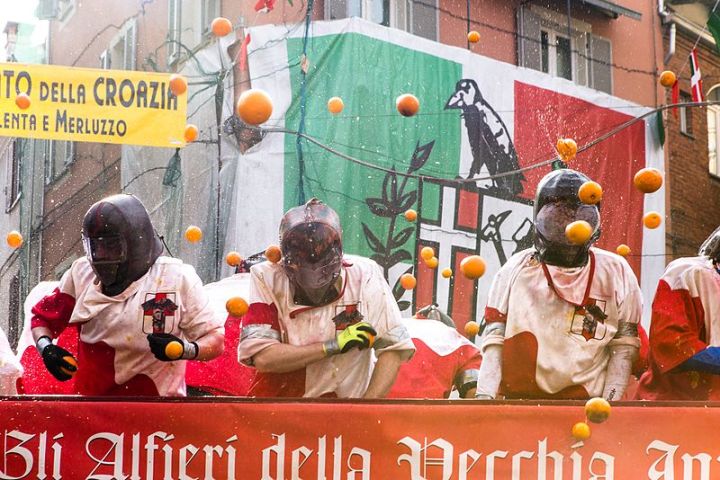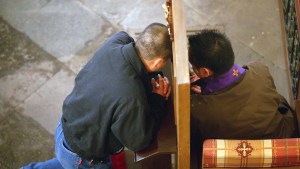Mardi Gras. Shrovetide. Fat Tuesday. Pancake Day. It goes by many names, but whatever you call it, it’s a day Catholics love to celebrate. Traditionally, this is the day when people indulge in whatever they’re giving up for Lent, most commonly desserts.
Lent itself has a long and fascinating history. Observance of it has varied so much over the centuries that some historians describe it as a “choose your own adventure” liturgical season.
In some places Christians only fasted on weekdays, while in other places people fasted even on Sundays but for fewer weeks, and some places observed a three-week fast instead of the six-week fast we follow today. The one consistent thing is that fasts were a lot more intense in earlier times.
This variety continues today to some extent, as each person is free to choose his or her own Lenten sacrifice, and is especially apparent in the many different ways that Christians around the world celebrate Mardi Gras. The day is honored with all manner of revelry and excitement, and always with some delicious treats!
Here are some of the most memorable ways that Mardi Gras is celebrated around the world.
New Orleans, United States
One of the most famous celebrations of Mardi Gras is in the United States, in New Orleans, Louisiana. French settlers brought the Catholic custom with them in the 1700s, but all residents of the area adopted it and made it their own. A visitor to the city wrote in 1835, “Shrove Tuesday is a day to be remembered by strangers in New Orleans, for that is the day for fun, frolic, and comic masquerading.” Parades, masked balls, feasting and carousing fill the city in the days leading up to Mardi Gras itself.
Ivrea, Italy
In Ivrea they celebrate “The Battle of the Oranges,” remembering the day the city revolted against a cruel tyrant hundreds of years ago, with a giant food fight! Oranges fly everywhere and the city fills with parades and bonfires. All the fun ends at midnight on Tuesday, when the city begins to observe a solemn Ash Wednesday.
Poland and Chicago
Polish immigrants brought the tradition of eating pączki to America; in Poland and in Chicago, Fat Tuesday is known as “Pączki Day,” although in Poland festivities are often held on the Thursday before Lent starts instead. The customary pastries are made from a rich dough containing eggs, fats, sugar, and yeast, and are filled with everything from the traditional wild rose petal jam to custard and Bavarian cream. The word pączki comes from a Slavic word meaning “to swell, or burst,” which is fitting for these treats bursting with goodness!
Rio de Janeiro, Brazil
One of the world’s biggest and most famous Mardi Gras celebrations is in Brazil. Called carnival, from “carnelevare” meaning “to remove meat,” the entire nation turns out for a six-day festival of epic proportions. With parades, music and dancing, and elaborate costumes, Carnival is a major tourist attraction and a good time for all!
Acadania, Louisiana
In rural Cajun areas, Mardi Gras is celebrated the way other places celebrate Halloween, with costumed disguises and going from house to house begging for treats. This day is called the “Courir de Mardi Gras” and comes from the way medieval France celebrated Mardi Gras, which settlers brought to Louisiana with them in centuries past.
United Kingdom and the Commonwealth
The name Shrove Tuesday comes from “shrive,” meaning “absolve,” since traditionally this was a popular day to go to confession before Lent started. But today it’s also known as Pancake Day! Most historically Christian countries have a special pastry to use up eggs, sugar, and milk before Lent begins, and in England, Australia, and Canada, the customary food is pancakes. Yum!
Scandinavia
The tradition on Fat Tuesday in Scandinavia is a cardamom-spiced sweet roll filled with a mix of milk and almond paste, sometimes served in a bowl of hot milk and sometimes eaten on its own. The Swedish call it a “semla” or “fettisdagsbulle” (“Fat Tuesday roll”), people in Norway and Denmark call it a “fastelavnsbolle,” and in Iceland it’s simply a “bolla.” Whatever you call it, it’s a mouth-watering treat!
Spain
In Spain, Shrove Tuesday is called “día de la tortilla” (“tortilla day”). Spanish tortillas are a rich baked dish of eggs and potatoes, perfect for using up fat and eggs before Lent.
Portugal and Hawaii
Portuguese workers brought their celebration of “Terça-feira Gorda” (Fat Tuesday) to Hawaii in the 1800s, along with their traditional treat, malasadas. To this day, Shrove Tuesday is called Malasada Day in Hawaii, and a local malasada bakery reports it as their busiest day of the year.
Russia
Russia celebrates Fat Tuesday as “Maslenitsa,” also called “butter week” or “cheesefare week.” Orthodox Christians have already given up meat at this point, so this week is dedicated to using up the remaining eggs, milk, cheese and dairy products. The traditional food is blini, thin pancakes or crepes that are often served with a sweet or savory filling or topping. In some regions, each day of this week has a traditional activity, all dedicated to merrymaking and enjoying time with friends and family before the penitential season of Lent starts.








